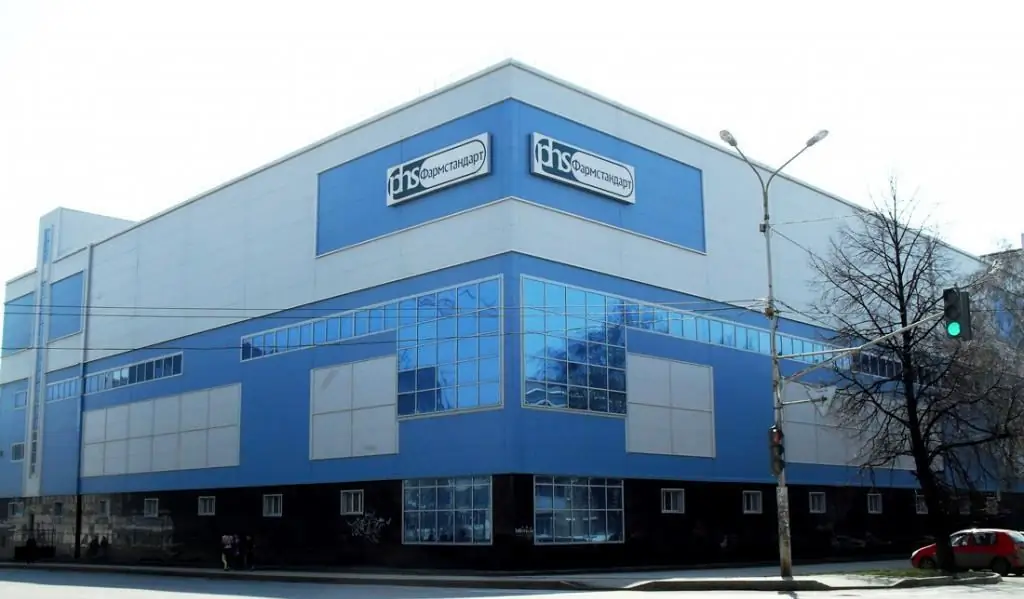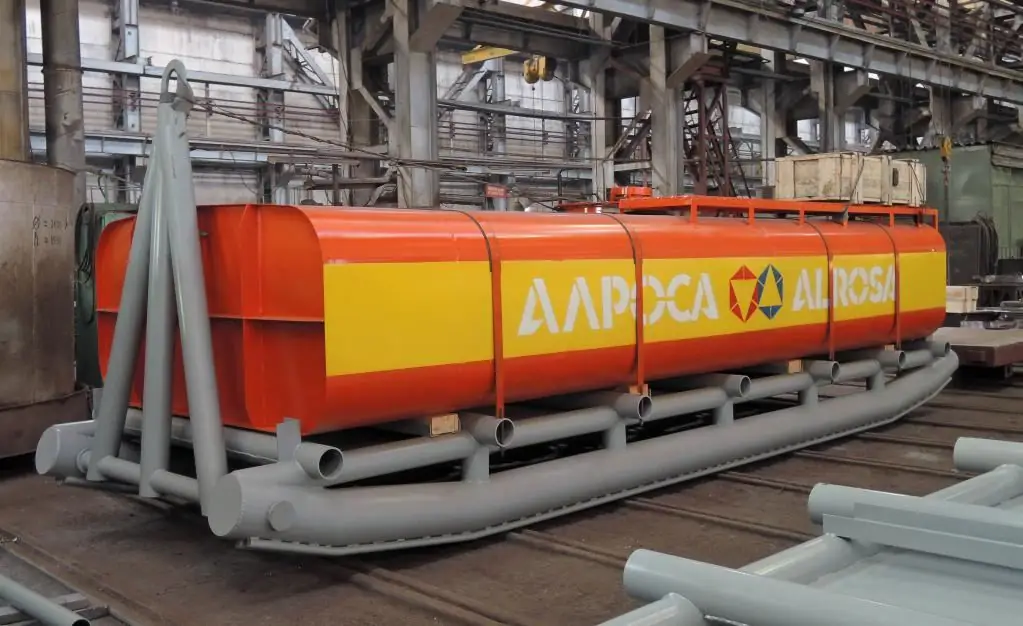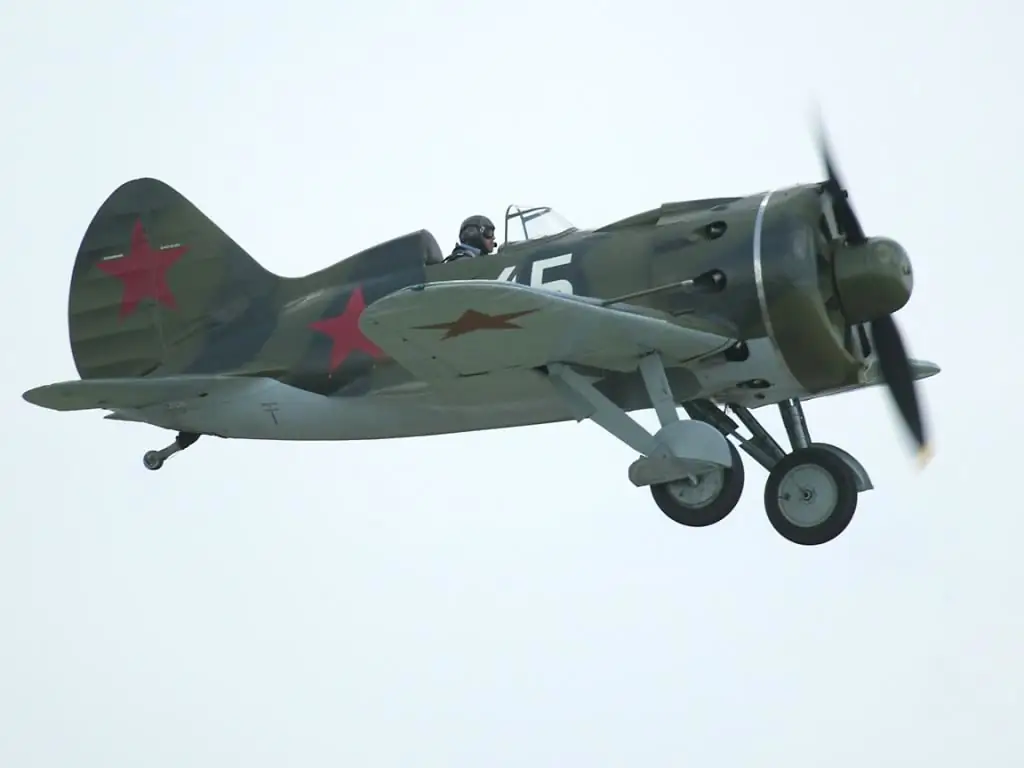2026 Author: Howard Calhoun | [email protected]. Last modified: 2025-01-24 13:10:47
Novosibirsk is home to one of the largest Russian aircraft manufacturing companies, which is called the Chkalov Novosibirsk Aviation Plant. The company begins its legendary and heroic history in the distant 1936.
History of the plant
The history of the company begins in the 30s of the twentieth century. The first stone in the foundation of the future aircraft plant was laid in the summer of 1931. Initially, it was planned to build a mining equipment plant on this site, near the central part of the city of Novosibirsk. The name of the plant is Sibmashstroy.
In May 1936, the Council of Labor and Defense of the country decided that this factory would build aircraft.
In the same year, in accordance with the order of the People's Commissar of Defense K. Voroshilov, more than 300 demobilized military personnel were sent to Novosibirsk. They were identified as aircraft specialists. They became the main component of the future team of the plant. Within a year, the company employed more than 2,000 people.

The first-born of the plant - the I-16 fighter
N. N. Polikarpov's monoplane became the first aircraft of the Novosibirsk plant, he wore the abbreviation I-16. It was built and successfully tested in November 1937. Between 1937 and 1944 more than 600 fighters of this type were produced at the plant for the Red Army Air Force. This aircraft was the most massive aircraft of this class for its time. It found wide application in the Spanish war, the armed conflict at Khalkhin Gol. He played his role on the fronts of the Second World War. It was a light and very maneuverable wooden aircraft. V. P. Chkalov on it for the first time in the world made an upward spin.
The first-born of the plant, the I-16 fighter, was affectionately called "Ishachok" by the people. In fact, the plane was made of wood. Most of the fuselage was made of plywood. He also became famous for the fact that he became the first fighter in world history - a monoplane. The famous native of Novosibirsk, three times awarded the title of Hero of the USSR, Alexander Pokryshkin, began his illustrious career with Ishachka.
The name of another legendary Soviet aviator V. P. Chkalov is also inextricably linked with the history of the plant. After the pilot died tragically, the plant staff turned to the USSR Armed Forces with a request to perpetuate his name in the name of the enterprise. In January 1939, the request of the workers was granted, and the Novosibirsk Plant No. 153 was named after the hero. It became known as the Novosibirsk Aviation Plant. V. P. Chkalova.

Factory and LaGG aircraft
In the late 30s, the plant actually became the ancestor of the fighteraviation of the USSR. In 1939, the factory team began to build the first high-speed fighter, which had a wooden fuselage structure with elements of the so-called delta wood.
The plane was named LaGG-3, after the names of the designers (Lavochkin, Gudkov, Gorbunov). However, the manufacture of fighters was accompanied by various problems, one of the main ones was the difficulty in buying phenolic resins produced only abroad. As a result, with the outbreak of war, the production of these machines began to decline steadily. At the end of 1941, the LaGG-3 was actually taken out of production. However, by this time, the plant had produced almost 900 machines of this type.
The factory workers are proud of the LaGG fighter. He really made a great contribution to ensuring the defense of the USSR in the Second World War. The LaGG aircraft had the nickname "piano" due to the fact that the car was made of specially treated wood. The fuselage of the aircraft was carefully polished, as a result of which it became similar to a concert instrument - a piano. The delta wood used in the manufacture of the aircraft was not afraid of fire. LaGG was a formidable weapon. Historical chronicles say that Stalin himself decided to produce a fighter. He personally tried to set fire to a sample of delta wood. However, neither the matches nor the coals of his pipe could do this. And Stalin, convinced of the stability of the aircraft, gave instructions to begin its construction. You can get acquainted with this wood by visiting the factory museum; the railings of the stairs and steps are made of it. In the same museum, you can read reviews about the Novosibirsk Aviation Plant. V. P. Chkalov. Throughout its 80-year history.

Start of the Second World War, new planes
After the start of the Second World War, the Novosibirsk Aviation Plant. V. P. Chkalova began to accept the evacuated equipment of aviation enterprises in Moscow, Leningrad and Kyiv, as well as aircraft builders of these enterprises. In December 1941, the plant began to produce new aircraft - Yak-7b fighters, designer A. S. Yakovlev. He, as Deputy People's Commissar of the USSR Aviation Industry, personally supervised the production of these aircraft. The influx of specialists and production capacities from the European part of the USSR led to the fact that the plant significantly increased their output. The area on which the production of aviation equipment was carried out increased by 5.5 times. And the number of equipment and machinery involved in the aircraft industry is 7 times.
At the end of 1941, the enterprise built the first batch of Yak-7 fighters in the amount of 21 aircraft. The following year, 1942, 2211 fighters of this type were already manufactured. In 1943, the Novosibirsk Aviation Plant named after V. P. Chkalov began producing Yak-9 aircraft, which became the most massive WWII fighter.

Results of wartime work
During the Second World War, the plant produced about 15,500 Yak modification aircraft. This became possible due to the great dedication of the plant staff. Many workers did not leave the workshops for days, overfulfilled planned targets, often by several dozen times. The world has never known such selfless giving. Especially sincemore than 70% of the plant's workers are women and children aged 12-14. The main slogan of the plant employees was "Regiment per day!", And this is about 28 - 30 items per day. To achieve the tasks set, the plant organized production lines for assembling fighters. By the time the war ended, there were 29 such lines.
There are memories of Anna Lutkovskaya, the founder of one of the factory dynasties, about how children worked at the plant during the war:
“…I still remember the thin, emaciated faces of girls and boys during the war. Hungry, cold, we lived in workshops, slept on the floor at workplaces. The children were given rubber boots that froze to their feet.”
The factory workers spoke very touchingly about Alexander Pokryshkin's visit to the factory. He, visiting the workshops, was strongly impressed when he saw the working starved children. He talked to each of them, hugged, said hello and constantly repeated:
“You are my children, children. Still, victory will be ours. And it will be very soon.”
In wartime, the factory workers created a fund. Donations were made to it from their modest earnings. During the war years, 250,000 rubles were collected for the needs of the families of front-line soldiers. To equip aviation squadrons "For the Motherland" - 250,000 rubles. For a tank column from the plant - 130,000 rubles. For the development of Chkalovets production - 3,410,000 rubles
During the war years, all aircraft factories of the USSR produced about 36,000 Yak family fighters. From these figures it follows that NAZ them. Chkalova produced almost every second aircraft.

The first post-wartime
The post-war period became decisive for the plant. In 1947, the enterprise began to produce MiG-15 jet fighters in a series. And since 1951, it switched to the production of the MiG-17 (fighters designed by Mikoyan and Gurevich). For the enterprise, this time was a breakthrough, full of new scientific and technical developments. During this period, mechanization of labor amounted to a high 47%.
In May 1946, an design bureau was created at the plant, led by designer Oleg Antonov. In August 1947, the first legendary An-2 took off here. But the production of civilian aircraft of this type did not last long. In 1952, Antonov left for Kyiv, and the production of An-2 aircraft was also transferred to Ukraine. The plant again began to produce only military products.
In 1954, the Novosibirsk Aviation Plant. V. P. Chkalova switched to the production of MiG 19 fighter aircraft, unique for that time. In terms of their tactical, technical and flight characteristics, they far exceeded aircraft of a similar class from other world manufacturers. For almost 10 years, MiG aircraft have been produced by the plant. They were in service with the Air Force of the USSR and the Warsaw Pact countries. During this time, the plant has become a unique enterprise of the Union, which was equipped with the most advanced technology. The production of aircraft went on in a complete closed cycle (with the exception of engines, weapons, avionics). During this period, more than 2,000 advanced developments in the field of tooling were introduced into aircraft production technology, and injection molding technology was mastered. NAZ them. V. P. Chkalova at that time was at the forefront of technical equipment, as well asmanufacturability. All these factors have made it possible to increase the production of modern jet aircraft to 1000 per year.

Beginning of cooperation with the Sukhoi Design Bureau
A new milestone in the history of the plant has been cooperation with the Design Bureau of P. O. Sukhoi since the late fifties. It has not stopped until now. In 1956, the plant mastered the production of the Su-9. This marked the beginning of many years of serial production of aircraft developed by the Sukhoi Design Bureau.
Su-brand fighters, namely Su-9, Su-11, Su-15, Su-15 UT, produced by the plant, were the main air defense forces of the USSR. Their flight performance, combat capabilities, as well as design and technological features laid the foundations of the domestic aircraft industry.
An important stage in the development of the plant, as well as the country's aircraft industry as a whole, was the launch of the Su-24 aircraft into a series. The plant began production of this multi-purpose attack aircraft in 1971. At that time, this aircraft was much superior to aircraft of this class in the world.

Participation in the production of peaceful products
The plant was also engaged in the production of peaceful products. So, in the first years after the Second World War, the enterprise mastered the production of lighters made of aircraft-grade aluminum, furniture, and folding beds. The ZIC bicycle produced by the Chkalovsky plant was very popular among the population.
In the early nineties, with the onset of the crisis, the plant was again forced to produce non-core products. I had to master the production of motor boats, strollers for children, Kedr washing machines.
During the development of the Su-24 aircraft, the plant was connected to the Buran space program. Its specialists participated in the construction and testing of the spacecraft. However, space exploration plans for the plant did not materialize due to the closure of the program.
In the late 1990s, the plant launched a conversion program under which it mastered the production of civil aircraft. In the middle of 1994, flights of the An-38-100 aircraft developed by the Antonov Design Bureau began at the plant's airfield. It was intended to replace a number of aircraft, by this time recognized as obsolete, namely the An-2, An-28, L-410. Should compete with An-24 and Yak-40.

Currently, the plant is involved in the creation and construction of the Sukhoi Superjet 100 (SSj-100) airliner. The Novosibirsk Aviation Plant named after V. P. Chkalov is an aircraft manufacturing organization that is directly involved in its production, and the Siberian Aviation Research Institute is testing it.

Present
Since the beginning of the nineties, the plant has been involved in the manufacture of the Su-34 multifunctional fighter. This machine has great potential for modernization, as well as the creation of various modifications on its basis.
Delivery of Su-34 attack multirole aircraft to the Russian Air Force began in 2006.
Since the beginning of 2013, the plant has been a branch of JSC Sukhoi Company andis called the Novosibirsk Aviation Plant (NAZ) named after Chkalov.
Historical review of the Novosibirsk Aviation Plant named after V. P. Chkalov proves that it is the pride of the aviation industry of the Russian Federation. The planes of the plant showed the whole world that Russia is a country that successfully develops the most complex production.

Address of the Novosibirsk Aviation Plant. V. P. Chkalov: Novosibirsk, Polzunov street, house 15.
Recommended:
Gorky Automobile Plant (GAZ): the history of the plant and cars, features and interesting facts

Among Russian cities there are many whose history is inextricably linked with the functioning of large automobile enterprises. These are, for example, Naberezhnye Chelny and Tolyatti. Nizhny Novgorod is also on this list. The Gorky Automobile Plant (GAZ) is located here
PJSC Novosibirsk Chemical Concentrates Plant: history, description, products

PJSC Novosibirsk Chemical Concentrates Plant (NCCP) is a major global manufacturer of nuclear components for nuclear power plants and research centers. In a number of areas (for example, the synthesis of lithium, the manufacture of uranium fuel), it occupies a leading position in the global market. Part of the TVEL group of companies, a structural division of Rosatom
State Enterprise "Plant No. 410 of Civil Aviation": history, production, address

The State Enterprise "Plant No. 410 of Civil Aviation" carries out re-equipment, maintenance, diagnostics, overhaul of aviation equipment and aircraft engines. The main production facilities are located in Kyiv. It is a strategically significant production for the economic and military security of Ukraine
Vitamin plant in Ufa: history and date of establishment, management, addresses, technical focus, stages of development, introduction of modern technologies and product quality

The life of a modern person takes place in a rather unfavorable ecological environment, accompanied by intellectual and emotional overload. You can't do without taking vitamins and minerals even in the summer. This material will focus on one of the oldest enterprises in Ufa, which is engaged in the production of useful products
Irkutsk heavy engineering plant: history and date of establishment, address, management, technical focus, stages of development, introduction of modern technologies and quality

Irkutsk heavy engineering plant is a city-forming enterprise producing equipment for leading industries in Russia. The company's products are supplied to the domestic market, finds recognition and demand abroad

